Sword-wall (4R84)
Back to The Two Towers Index |
Thandronen, Veteran Protector (4C85) |
Sword-wall (4R84) is a Elven Event from the The Two Towers set.
| ||||||||||||||||||||||||||||||||||
| ||||||||||||||||||||||||||||||||||
| ||||||||||||||||||||||||||||||||||
| ||||||||||||||||||||||||||||||||||
Strategy[edit]
Sword-wall is rarely played. As a site liberation card, it's overshadowed by That Is No Orc Horn (5C14)
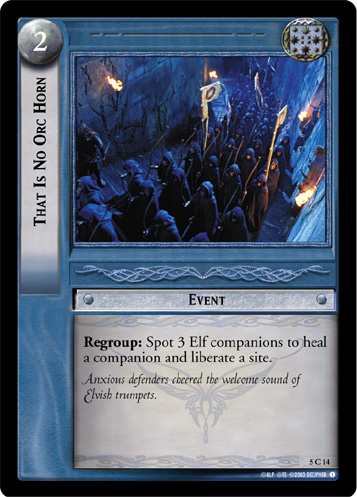 , which has the same cost and cultural enforcement but a more-useful secondary effect. As a direct wounding card, it can't kill minions and comes so late in the turn that it's unlikely to help kill any minion that wasn't going to lose its skirmish anyway. Elves generally don't have any skirmish phase wounding to speak of, other than the wound from winning a skirmish, and the spotting requirement limits this to
, which has the same cost and cultural enforcement but a more-useful secondary effect. As a direct wounding card, it can't kill minions and comes so late in the turn that it's unlikely to help kill any minion that wasn't going to lose its skirmish anyway. Elves generally don't have any skirmish phase wounding to speak of, other than the wound from winning a skirmish, and the spotting requirement limits this to Elven decks.
The card is mainly useful for its site liberation effect. Liberating a site unexpectedly can throw off skirmish bonuses for cards like Dunlending Elder (6C2)
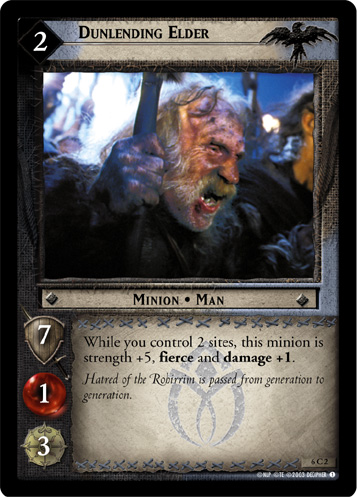 in Dunland Site Control or Tower Walkway (7C315)
in Dunland Site Control or Tower Walkway (7C315)
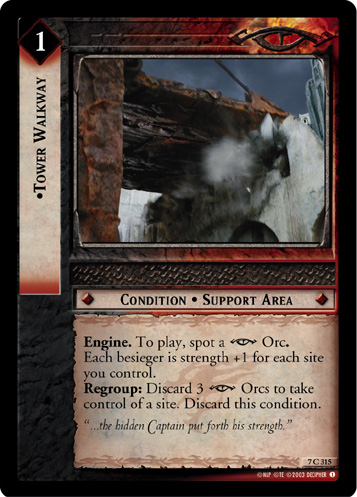 in Besiegers. While there are a lot of cultures that can control sites—
in Besiegers. While there are a lot of cultures that can control sites— Isengard,
Sauron,
Dunland,
Raider,
Men, and
Uruk-hai cultures all can—site control Shadow decks tend to be pretty predictable, since they need to start setting up their site control ASAP. If your opponent hasn't played a card that mentions controlling sites by about site 4, you can probably safely assume they're not going to.
As a wounding card, Sword-wall is fine but unremarkable. It's useful for shutting down minions with obnoxious skirmish phase or regroup phase exertion abilities like Orc Scouting Band (1U270)
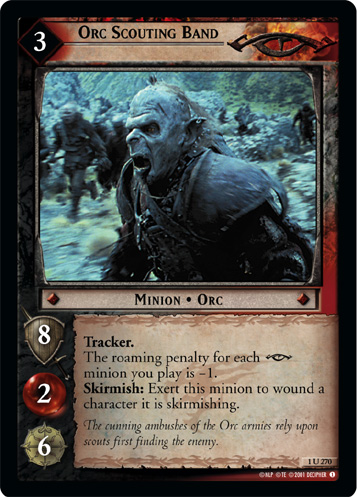 or Isengard Worker (3C62)
or Isengard Worker (3C62)
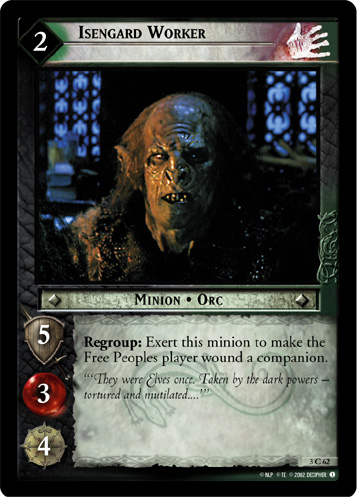 . It can also set up various
. It can also set up various Elven effects that spot wounded minions, like Lórien Swordsman (4C78)
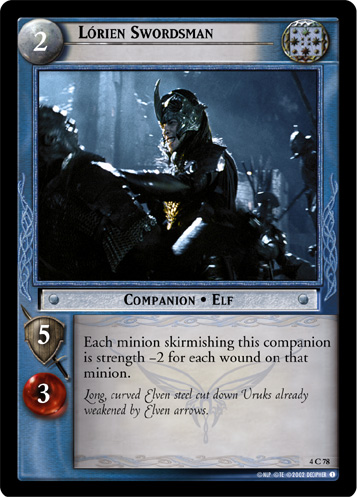 , Blades Drawn (4U60)
, Blades Drawn (4U60)
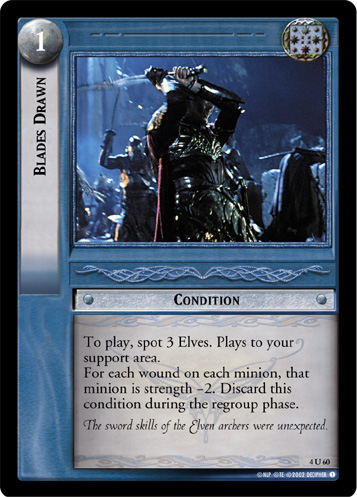 , Feathered (4U66)
, Feathered (4U66)
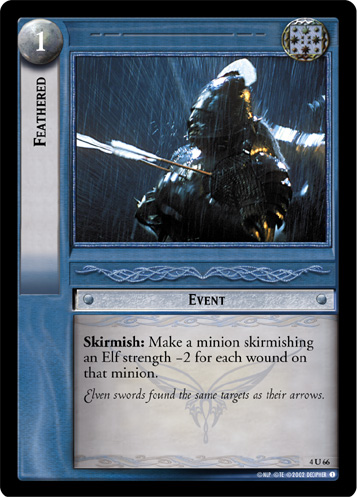 , and Arwen, Queen of Elves and Men (10R6)
, and Arwen, Queen of Elves and Men (10R6)
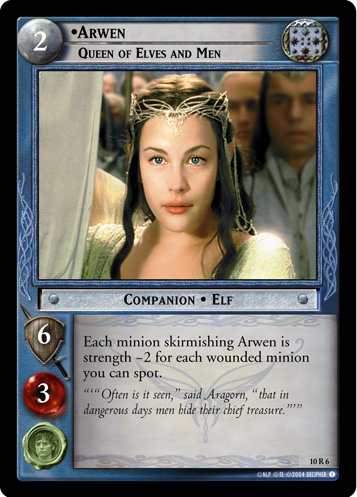 . You can also just use it to notch an extra wound on a minion to make sure it dies when it loses its skirmish, if you'd rather. The cost is negligible since it comes so late in the turn, unless you're planning to move again this round or playing against
. You can also just use it to notch an extra wound on a minion to make sure it dies when it loses its skirmish, if you'd rather. The cost is negligible since it comes so late in the turn, unless you're planning to move again this round or playing against Raider culture decks, which can sometimes respond with cards like Whirling Strike (4C260)
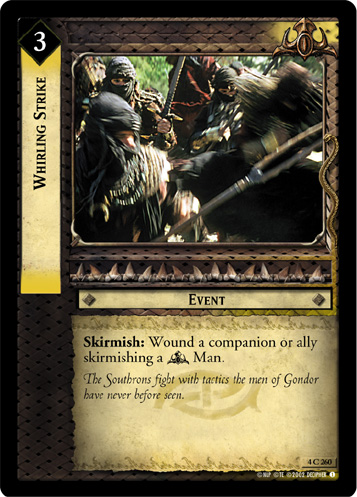 .
.
Strengths and Weaknesses[edit]
Synergizes With...[edit]
Elven cards that want to spot wounded minions, like Lórien Swordsman (4C78)
 , Blades Drawn (4U60)
, Blades Drawn (4U60)
 , Feathered (4U66)
, Feathered (4U66)
 , and Arwen, Queen of Elves and Men (10R6)
, and Arwen, Queen of Elves and Men (10R6)
 .
.- It's an
Elven skirmish event, and there are lots of cards that benefit from or grant benefits to those. Notable examples include Círdan, The Shipwright (10R8)
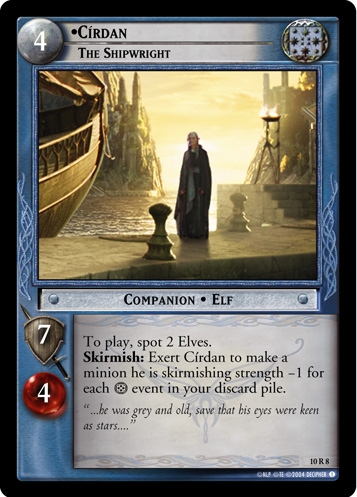 , Galadriel, Lady Redeemed (10R11)
, Galadriel, Lady Redeemed (10R11)
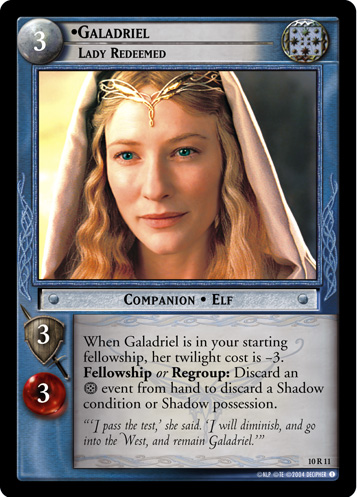 , Elladan, Son of Elrond (14R2)
, Elladan, Son of Elrond (14R2)
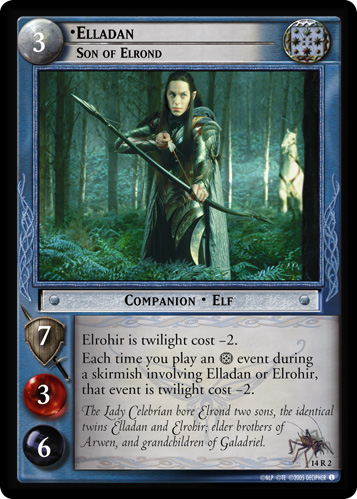 , Elrohir, Son of Elrond (14R3)
, Elrohir, Son of Elrond (14R3)
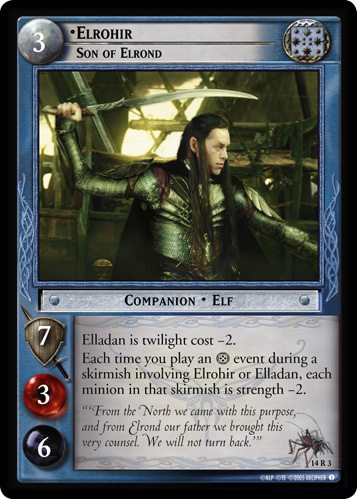 , Gil-galad, High King of the Noldor (18R12)
, Gil-galad, High King of the Noldor (18R12)
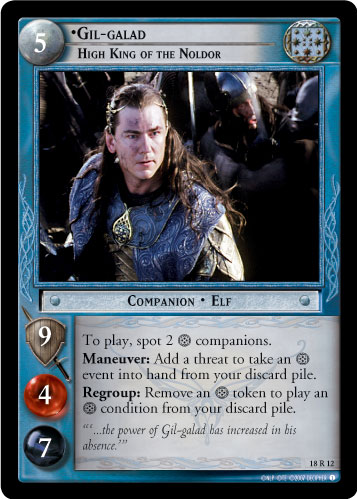 , and Galadriel's Silver Ewer (18R11)
, and Galadriel's Silver Ewer (18R11)
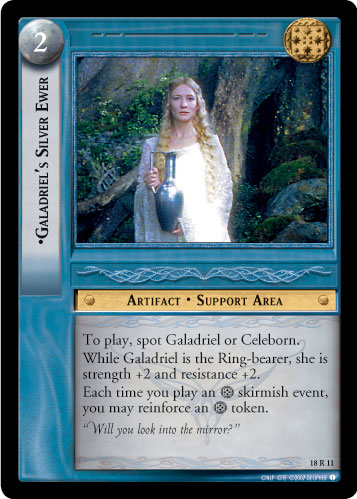 .
.
Strong Versus...[edit]
- Site control. It's the main reason to play this card at all.
- Minions which exert for abilities in the skirmish phase or later. For example, Orc Scouting Band (1U270)
 or Isengard Worker (3C62)
or Isengard Worker (3C62)
 .
.
Weak Versus...[edit]
- Enduring minions, and minions with similar abilities like Uruk Savage (1C151)
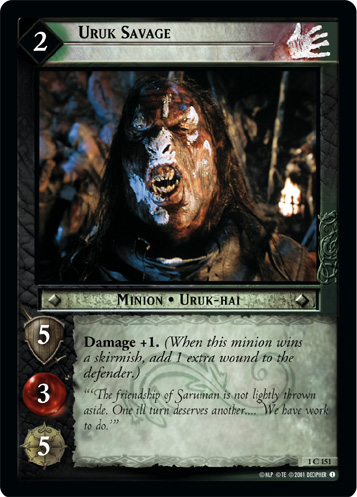
- Shadow cards that can use excess twilight in the skirmish phase or later, like Úlairë Attëa, Keeper of Dol Guldur (1R229)
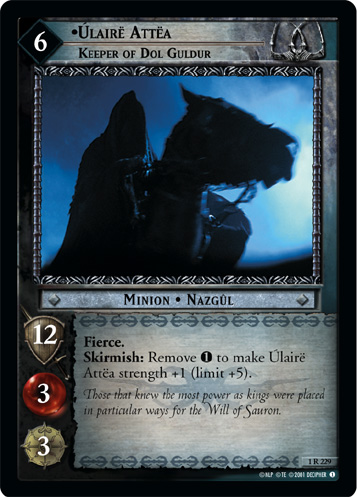 and Whirling Strike (4C260)
and Whirling Strike (4C260)

- Minions with only one vitality, common in
Moria and
Dunland






